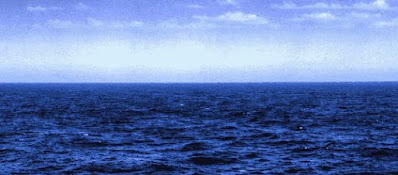Ancient Ocean Withdrawal Caused the Formation of the Indian Ocean Geoid Low

Anomalies in the Indian Ocean
A region of the Indian Ocean known as the Indian Ocean geoid low (IOGL) has long puzzled scientists. The IOGL is a pronounced dip in the geoid, which is the shape of the Earth's gravity field if it were not for the effects of the oceans.
The IOGL is the planet's most prominent gravitational anomaly, and it covers more than three million square kilometers.
The IOGL is characterized by a weaker gravitational pull, lower mass, and a sea level that is up to 328 feet (100 meters) lower than the surrounding area.
The IOGL is characterized by a weaker gravitational pull, lower mass, and a sea level that is up to 328 feet (100 meters) lower than the surrounding area.
This anomaly has been attributed to a number of factors, including ancient seafloor spreading, mantle plumes, and the presence of a large salt dome.
In a recent study published in the journal Geophysical Research Letters, researchers from the Indian Institute of Science in Bengaluru, India, have proposed a new hypothesis for the formation of the IOGL.
In a recent study published in the journal Geophysical Research Letters, researchers from the Indian Institute of Science in Bengaluru, India, have proposed a new hypothesis for the formation of the IOGL.
The researchers suggest that the IOGL was formed by the withdrawal of an ancient ocean that once covered the region.
The researchers used supercomputer simulations to track the movement of the Earth's mantle over time.
The researchers suggest that the withdrawal of this ancient ocean caused the mantle beneath the region to become depleted in mass. This depletion in mass led to a weaker gravitational pull, which in turn caused the sea level to drop.
The researchers' findings provide a new and compelling explanation for the formation of the IOGL. Their work could help us to better understand the Earth's history and its evolution.
The IOGL has a number of implications for the region. The weaker gravitational pull in the IOGL could affect the movement of tectonic plates, and it could also make the region more prone to earthquakes and volcanic activity.
The lower sea level in the IOGL could also have implications for shipping and navigation. Ships that pass through the region would need to take the IOGL into account, and they may need to adjust their routes accordingly.
The IOGL is a complex and fascinating feature of the Earth's geography. The researchers' findings provide a new and important piece of the puzzle, and they help us to better understand the history and evolution of the Earth.
The IOGL is a fascinating feature of the Earth's geography, and it is still not fully understood.
The researchers used supercomputer simulations to track the movement of the Earth's mantle over time.
As the Earth's tectonic plates moved, this ocean basin was gradually closed, and the water was forced to drain away.
The researchers suggest that the withdrawal of this ancient ocean caused the mantle beneath the region to become depleted in mass. This depletion in mass led to a weaker gravitational pull, which in turn caused the sea level to drop.
The researchers' findings provide a new and compelling explanation for the formation of the IOGL. Their work could help us to better understand the Earth's history and its evolution.
Implications for the IOGL
The IOGL has a number of implications for the region. The weaker gravitational pull in the IOGL could affect the movement of tectonic plates, and it could also make the region more prone to earthquakes and volcanic activity.
The lower sea level in the IOGL could also have implications for shipping and navigation. Ships that pass through the region would need to take the IOGL into account, and they may need to adjust their routes accordingly.
The IOGL is a complex and fascinating feature of the Earth's geography. The researchers' findings provide a new and important piece of the puzzle, and they help us to better understand the history and evolution of the Earth.
Indian Ocean Geoid Low: A New Explanation for the Formation of the Planet's Most Prominent Gravitational Anomaly
- The IOGL is located in the central Indian Ocean, between the Seychelles and Indonesia.
- The IOGL is about 3,000 kilometers (1,900 miles) wide and 1,000 kilometers (620 miles) long.
- The sea level in the IOGL is up to 328 feet (100 meters) lower than the surrounding area.
- The IOGL is thought to have formed about 140 million years ago, when an ancient ocean basin was closed.
- The IOGL has a number of implications for the region, including the potential for earthquakes and volcanic activity, and the need for ships to adjust their routes accordingly.
The IOGL is a fascinating feature of the Earth's geography, and it is still not fully understood.
However, the research of the Indian Institute of Science provides a new and compelling explanation for its formation. This work could help us to better understand the Earth's history and its evolution, and it could also have implications for the future of the region.





new secerts can be reveal in india ocean coming years
ReplyDelete